We select the size of the TV
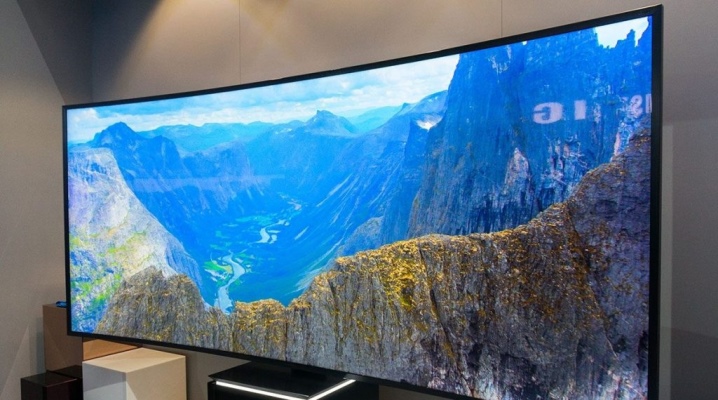
TV plays an important role in the lives of many people. This is not just a leisure technique, but also an element of the interior. Modern TVs are no longer limited to simple features. They let you watch your favorite movies and play games. And also the TV can be used as an additional monitor for a PC or laptop.
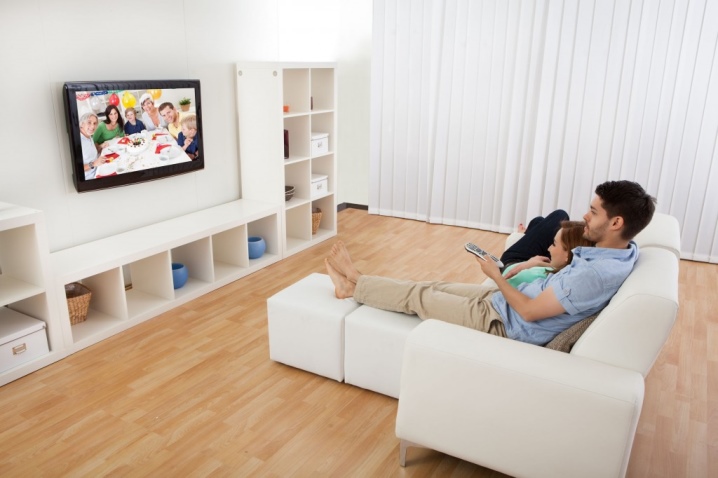
What are the sizes?
The size of the TV, more precisely, its screen, is indicated in inches. The maximum panel diagonal is 150 ". This complicates understanding a little, because most people are guided only in centimeters. For starters, it is worth noting that many modern TVs are labeled "4: 3" or "16: 9". These numbers indicate the aspect ratio.
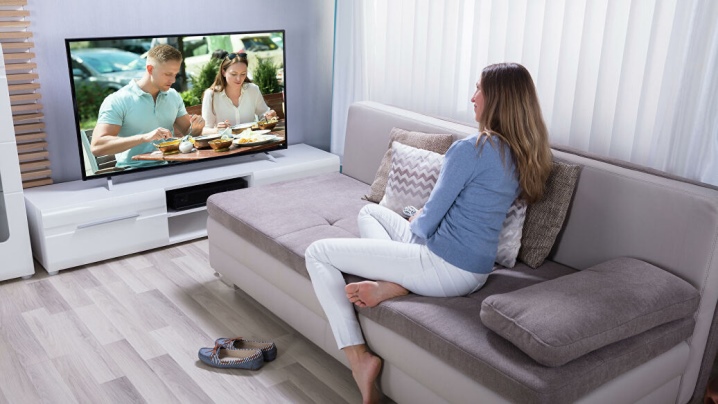
Once upon a time, all content was produced in 1: 1 format, screens were square. Convenient for photographs, because you can position the subject both horizontally and vertically. Then the 5: 4 format appeared, which gradually evolved into 4: 3. In this case, the screen height is used as a conventional unit, but the width depends on it.
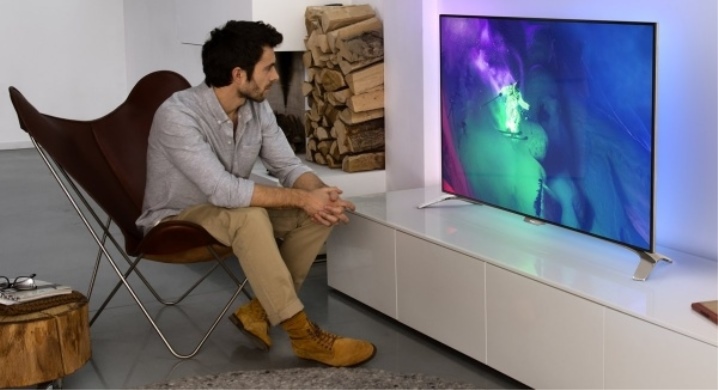
4: 3 aspect ratio is almost an authentic square. It was he who was used at the birth of television. Over time, this format has become the standard for analog signals. It was familiar and convenient.
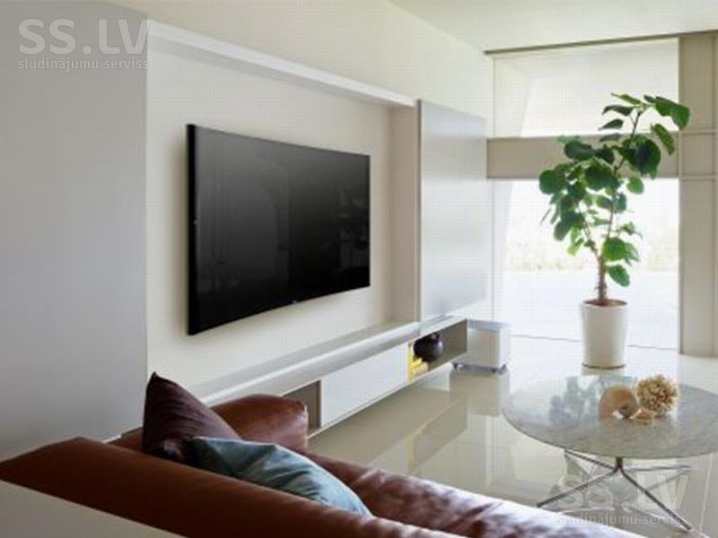
Digital television has become the reason for further development. The technique and requirements for it have changed. Widescreen pictures and 16: 9 resolution have become more popular.
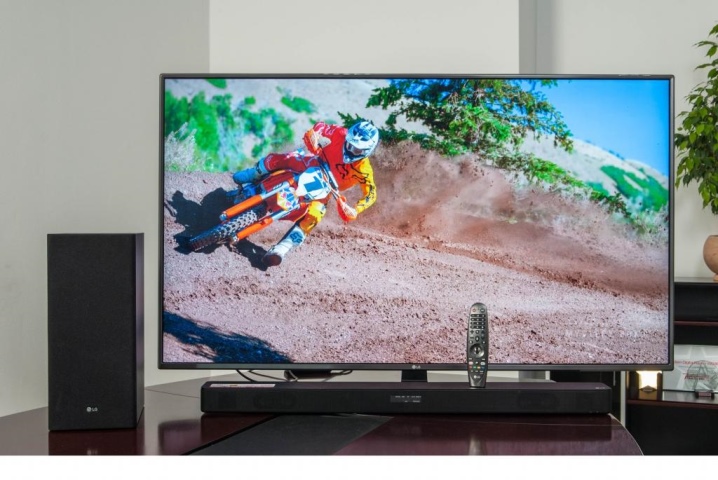
The increased area allows you to really enjoy watching high-quality movies.

If the diagonal of the two TVs is the same, but the aspect ratio is different, then the dimensions will also differ. With a 4: 3 format, the TV will be more square, but with a 16: 9 format, it will be elongated in length. It should be noted that the new format allowed for wider viewing angles.
A table of approximate dimensions for popular panels with an aspect ratio of 16: 9.
Diagonal | Height | Width | |
inch | cm | cm | cm |
20 | 51 | 25 | 42 |
22 | 55 | 27 | 48 |
25 | 64 | 32 | 55 |
30 | 75 | 37 | 66 |
35 | 89 | 43 | 77 |
40 | 102 | 49 | 89 |
45 | 114 | 56 | 100 |
49 | 124 | 61 | 108 |
50 | 127 | 62 | 111 |
55 | 140 | 68 | 122 |
60 | 152 | 74 | 133 |
65 | 165 | 75 | 133 |
70 | 178 | 87 | 155 |
75 | 190 | 93 | 166 |
80 | 203 | 100 | 177 |
81 | 205 | 100 | 179 |
85 | 216 | 106 | 188 |
90 | 228 | 112 | 199 |
95 | 241 | 118 | 210 |
100 | 254 | 124 | 221 |
105 | 266 | 130 | 232 |
110 | 279 | 136 | 243 |
115 | 292 | 143 | 254 |
120 | 304 | 149 | 265 |
125 | 317 | 155 | 276 |
130 | 330 | 161 | 287 |
135 | 342 | 168 | 298 |
140 | 355 | 174 | 309 |
145 | 368 | 180 | 321 |
150 | 381 | 186 | 332 |
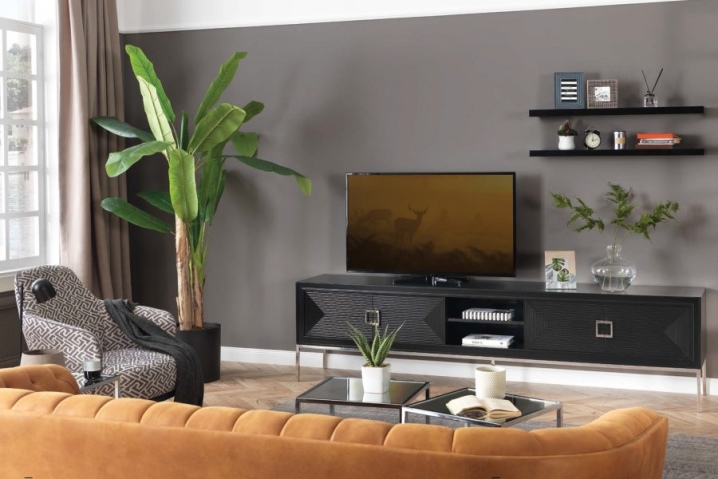
These dimensions can be used as a guideline. The table shows the width and height of the panel, not the entire TV. Additionally, it is worth considering the framework. However, these numbers make it possible to more objectively represent the diagonal of the TV.
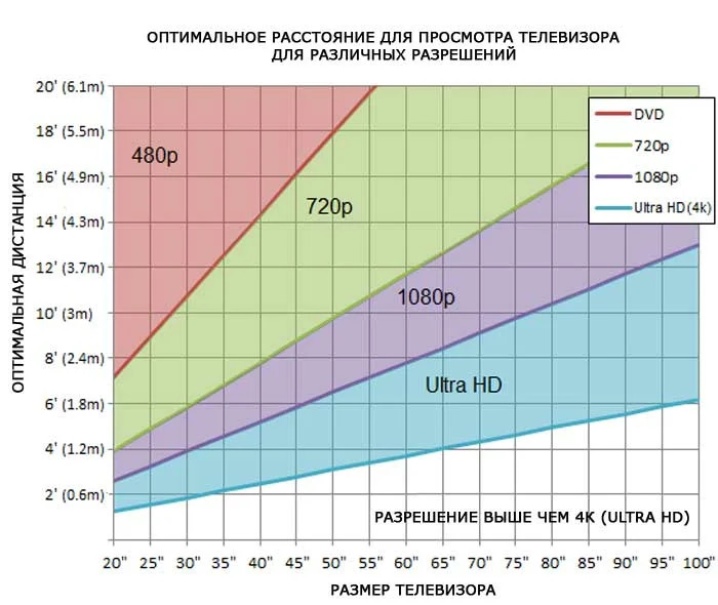
How to measure the diagonal?
Incorrect measurements can be a major barrier to buying the perfect TV.... Many users believe that to determine the diagonal, it is enough to take a tape measure and measure the distance from one corner of the panel to the opposite. That's just wrong. There is an easy way to check the size of your TV. You just need to determine the correct measurement points.

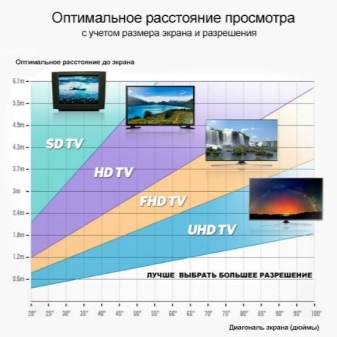
So, you can find out the diagonal of the TV if measure the matrix between the lower right and upper left corners. The points should be located diagonally to each other. Before installing the panel, it is additionally necessary measure its depth... It is worth noting that curved matrices should be measured with an ordinary sewing centimeter.
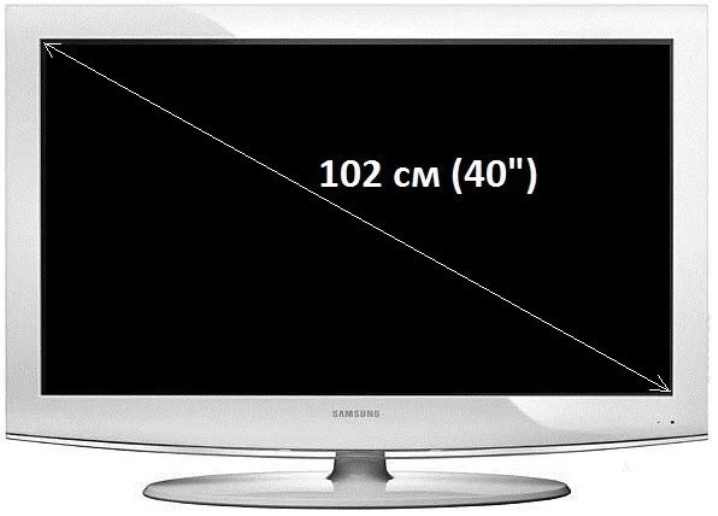
Rules for converting inches to centimeters
When choosing a TV, it is important not to be mistaken with the dimensions. The European metric system will help determine how many centimeters are in 1 inch.
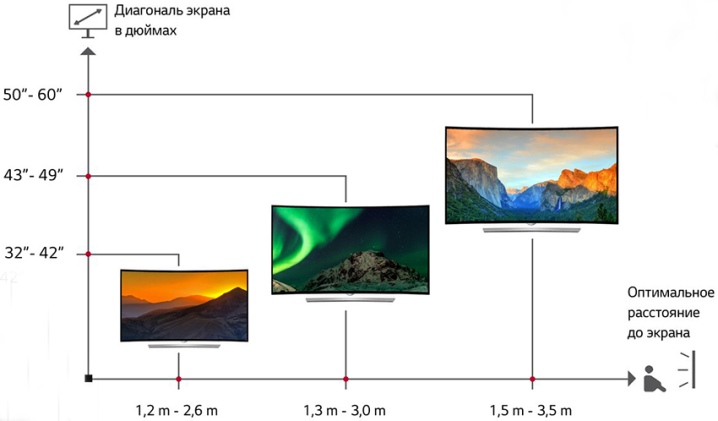
For example - calculating the size of a TV with a diagonal of 54". One inch is 2.54 centimeters. It is easy to understand the diagonal of the TV. It is enough to multiply 54 by 2.54. The result is 137.16 cm, which can be roughly rounded to 137 cm.
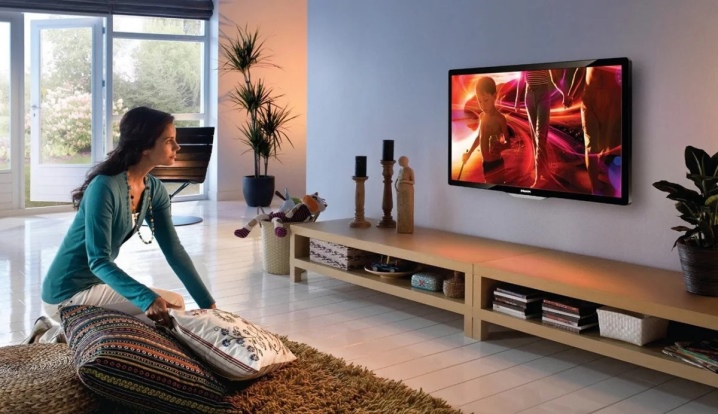
In the example, substitute any number of inches for "54".Such a simple formula will allow you to correctly translate one unit of measurement into another, more familiar one.
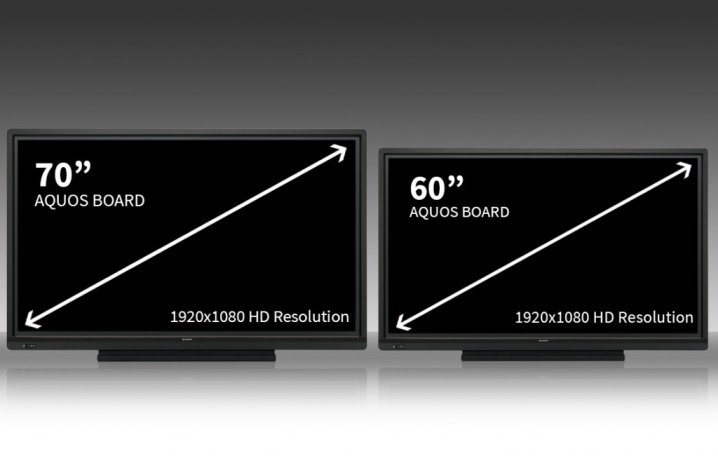
You can measure the TV with a tape measure, and calculate the number of inches (0.393 cm in 1 inch). For example, when measuring the result is 102 cm, this number is multiplied by 0.393 - and as a result the diagonal is 40 inches. It is enough to know the size in one unit of measurement to convert it to another. When measuring with a tape measure, do not grab the frames of the television panel.
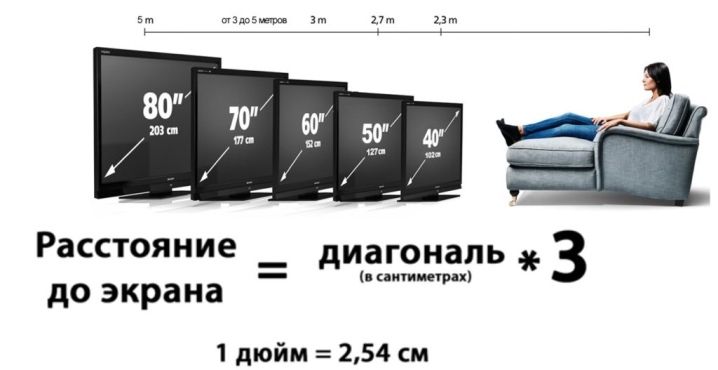
What to consider when choosing?
- The diagonal of the TV is of key importance when choosing a technique. This indicator affects the level of pleasure from watching your favorite films and programs. In this case, the size of the TV should be selected more carefully for comfortable viewing in a particular room. The place of installation should be taken into account.
- The TV will only function properly if there is adequate ventilation. It should not be pushed close to walls and furniture. Leave a few centimeters of space. Of course, the diagonal directly affects the picture quality. If the size of the house and the budget allow, then you should choose the largest TV.
- There is a certain ratio between screen diagonal and distance to a personwho is watching TV. Previously, there were CRT TVs, which carried some harm to eyesight. The distance from the TV receiver to the person was equal to 4-5 panel diagonals. Modern models are safer, so the calculations are done differently.
- Screen size, resolution and distance are directly related. The pixel structure determines the comfort of watching a movie or broadcast. There is a minimum distance at which it is impossible to distinguish between individual points. It is this that is considered optimal.
- The close proximity to the panel facilitates the use of peripheral vision. Feelings are as close as possible to what people experience in the cinema. The user gets the opportunity to immerse himself as much as possible in the action that takes place on the screen. However, the rule is not so straightforward.
- Information programs should be watched at an increased distance from the TV. This will allow you to track all content elements as efficiently as possible, including the crawl line, weather information, and the like. It is important that you do not have to turn your head in order to study a separate part of the image. Otherwise, you will not be able to enjoy using TV.
- The optimal distance from the TV is determined by the selected content. It's worth noting that most of the movies are streamed in Full HD quality. It is possible to sit close to the panel. But TV shows are usually shown in SD or 720 p. Relatively speaking, the optimal distance is 1.5-3 diagonals.
- It is equally important to consider the aspect ratio of your TV. The most popular option among modern models is 16: 9. The distance to the screen should be 2.5-3 diagonals. If the more outdated 4: 3 format is used, then from 3 to 5 diagonals.
- Viewing angle and screen size are related. In general, the issue of distance from the TV is only important because everyone wants to experience the feeling of maximum presence. So with a significant immersion, the user experiences more pleasure. The presence effect also depends on the viewing angle.

There are many different recommendations that apply to specific models. Here are some tips for using HDTV TVs.
- The viewing angle is 20 °. You should move away at a distance equal to 2.5 diagonals.
- Viewing angle 30 °. In this case, you can reduce the distance to 1.6 diagonal. It is especially important if a home theater is used.
- Viewing angle 40 °. The optimal solution is 1.2 diagonals. This is the shortest distance at which you can comfortably enjoy a picture in Full HD resolution.

It is good if the TV is purchased only for home theater. Especially you can not be sophisticated. If the panel is needed just for home use, then it is worth considering not only the immersion effect, but also other nuances. Usually manufacturers indicate the minimum (10-20 °) and maximum (30-40 °) viewing angles of a particular model.
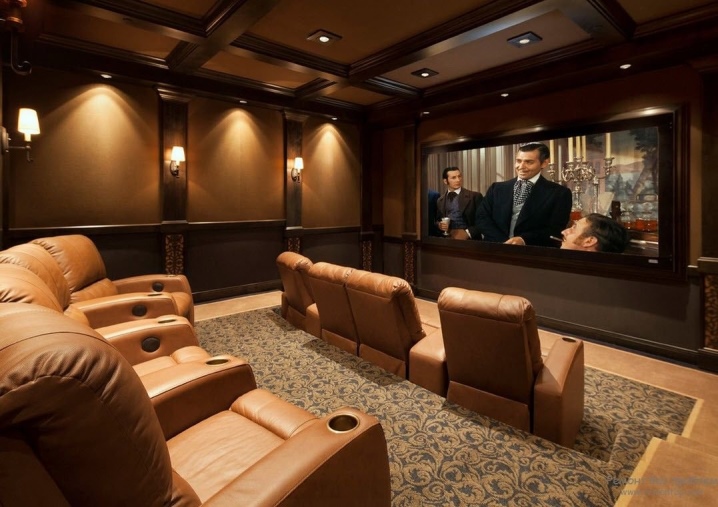
You can first determine the optimal distance, and select the desired diagonal for it.
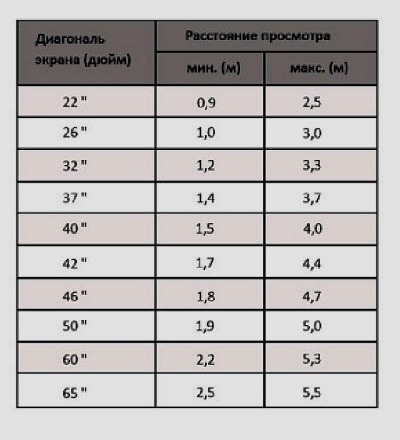
This is a good solution if the room is small. You can do the opposite. And also it is worth considering the distance from the screen, depending on the resolution of the picture on the screen.
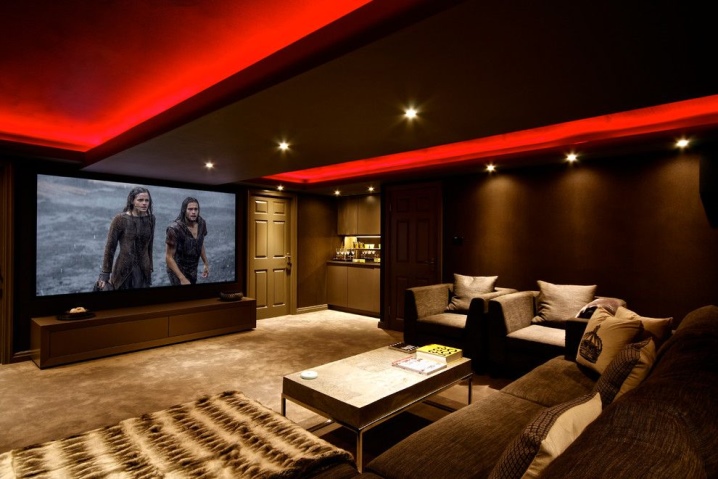
The size of the diagonal can be selected according to the dimensions of the room where the TV will be installed... These two indicators are interrelated. If you put a large TV in a small room, it will be extremely inconvenient to use it. Moreover, such use of technology will have a bad effect on vision.
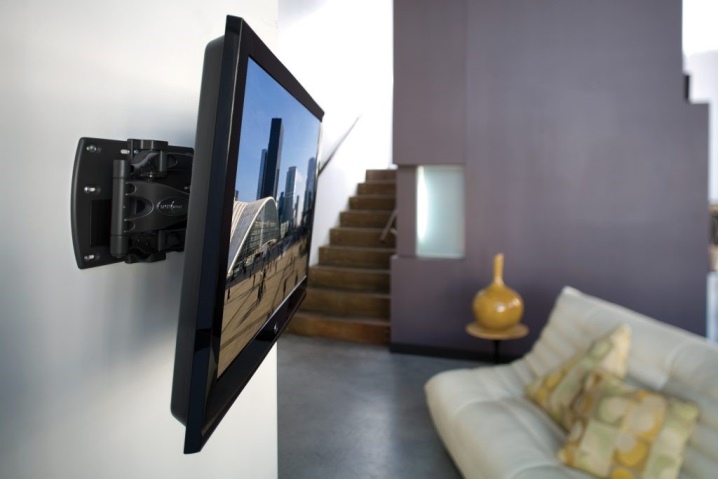
There are other possible complications due to the incorrect selection of the TV.
- If the distance is insufficient, the viewer will see the slightest defects in the image. This is especially frustrating when the signal is bad.
- Eyes get tired quickly if the user is too close to the TV. With systematic viewing, vision may deteriorate altogether.
- It is quite problematic to capture the entire screen of a large TV at once at a short distance. When you turn your head, some of the content will be left unattended in any case.

A large TV panel in a small room looks awkward. In large storerooms, all models seem small, but this is just an optical illusion. The largest panels are used for home theater applications. It is convenient to watch movies and play games on these TVs. However, watching news broadcasts will be uncomfortable.
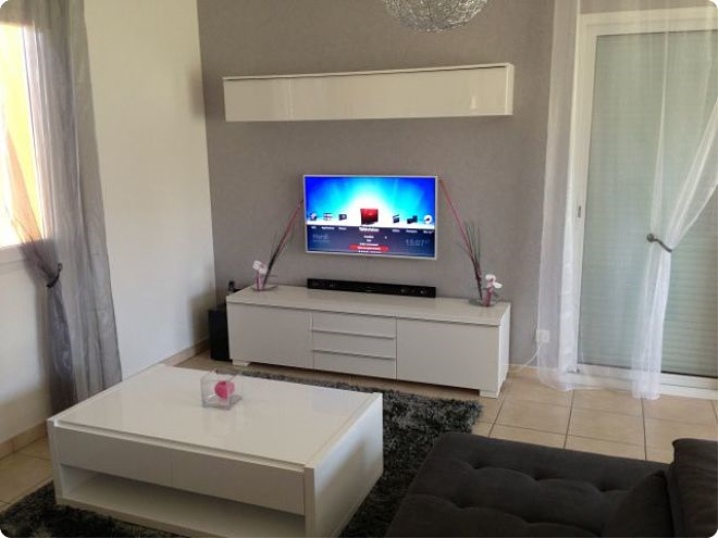
Manufacturers offer a variety of TVs in various sizes. The diagonal in the range of 26-110 inches is especially popular. Approximate screen distance:
- the sofa should be located 1.6 m from the 40-inch TV;
- if the matrix size is 50 inches, then move away to 2.2 m;
- TV with a diagonal of 65 inches is comfortable to use at a distance of 2.6 m.
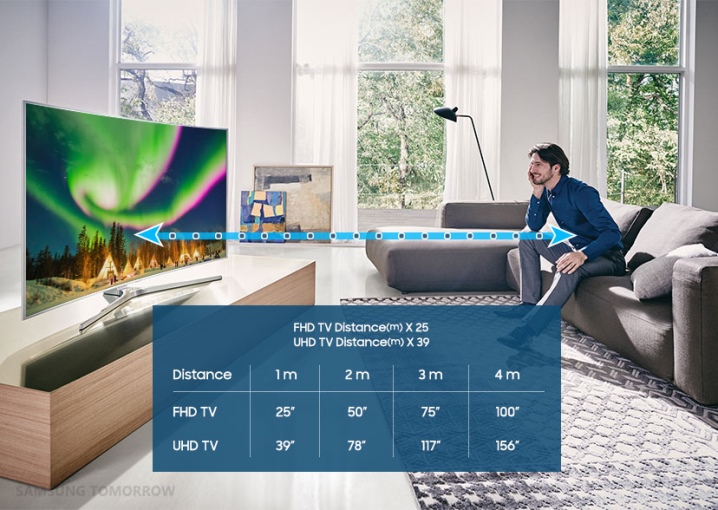
It should be taken into account that the panel should not stand close to the wall... A couple of centimeters should be left there. The back of the chair also moves the user away from the opposite end of the room. In other words, it is not enough to consider just the distance from wall to wall.
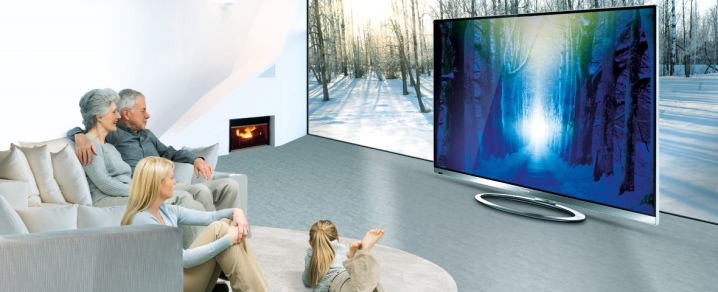
Wherein for watching movies, you can pick up a TV slightly larger than recommended. This will enhance the sense of presence. It is only important not to overdo it and exceed the norms quite a bit. A large TV is inconvenient if you have to watch news, sports programs. Some of the content will always be out of focus.

Recommendations
Modern manufacturers offer TVs for every taste. Determining the appropriate size in the storeroom, "by eye", is quite difficult. Due to the visual effect of a large room, all devices appear small. It is worth considering the question of the diagonal in advance. Important parameters:
- the size of the room;
- design features;
- location of the TV;
- intended content.
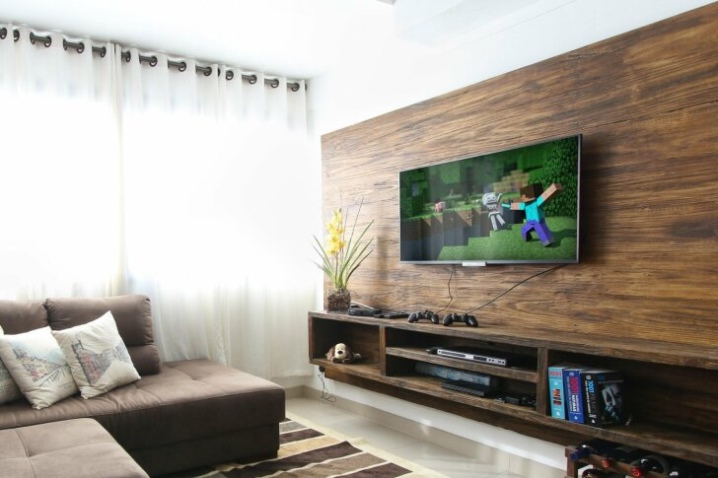
It is imperative to convert inches to centimeters and measure the space.

It is also worth considering that the screen diagonal does not take into account the size of the TV frames. Each type of room has its own recommendations for the size of the panel. Optimal diagonal:
- TV 19-22 inches can be installed in the kitchen;
- watching movies before going to bed in the bedroom is convenient if the panel has a diagonal of 22-26 inches;
- a TV set with a screen size of 32-65 inches can be installed in the hall.
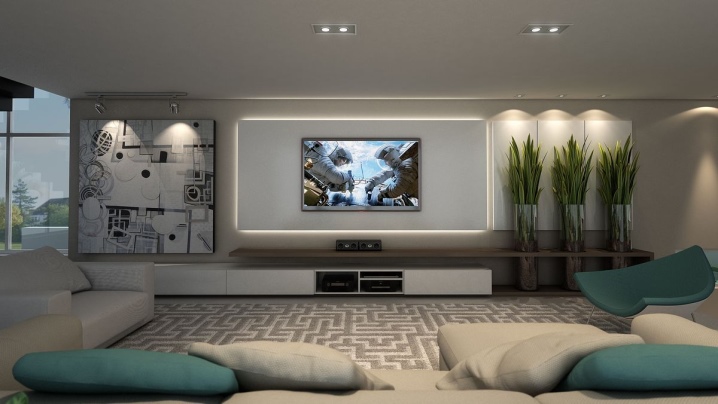
In the following video, you will learn how to choose the right TV size.













The comment was sent successfully.